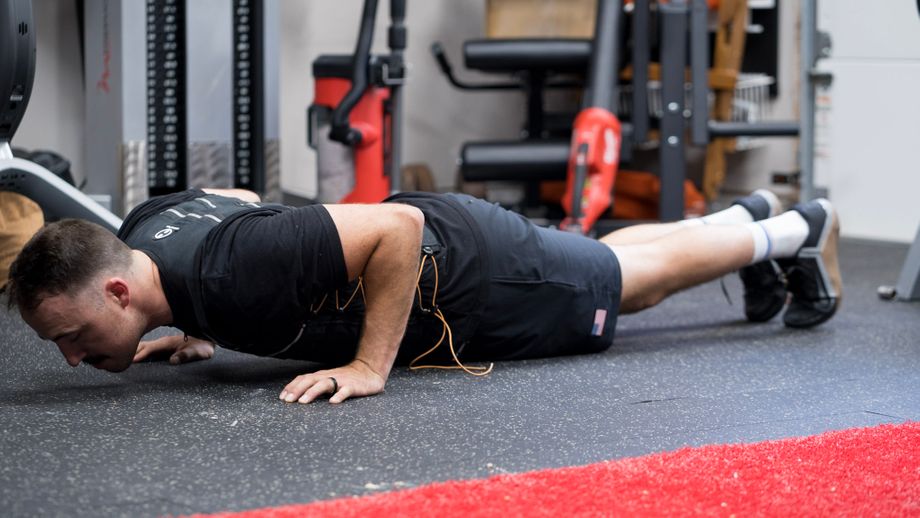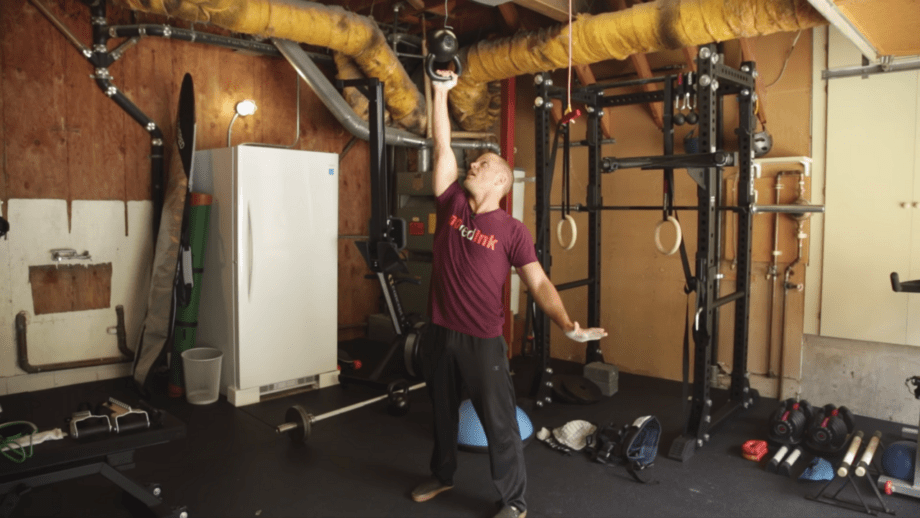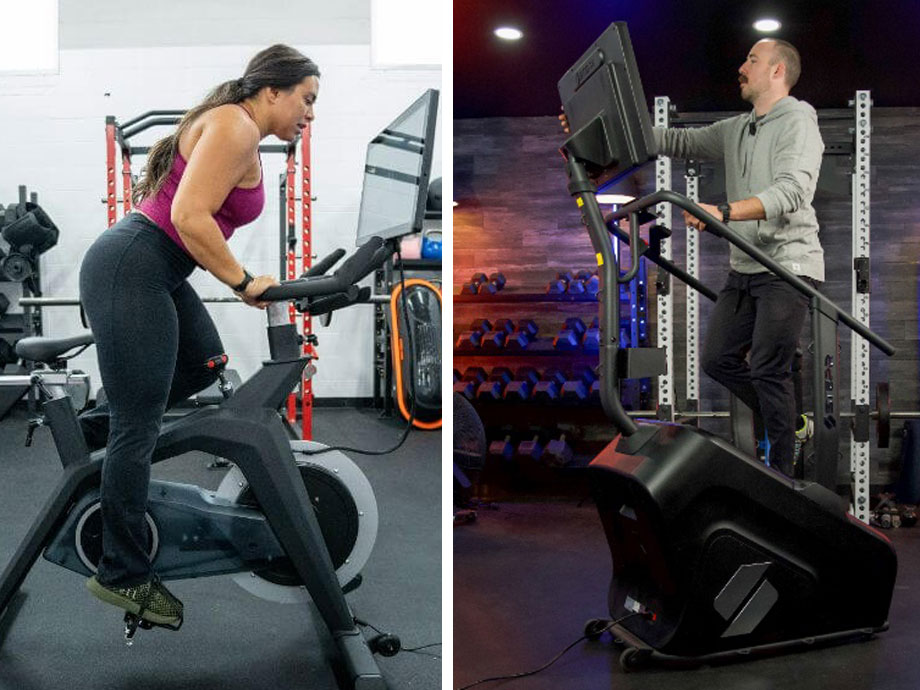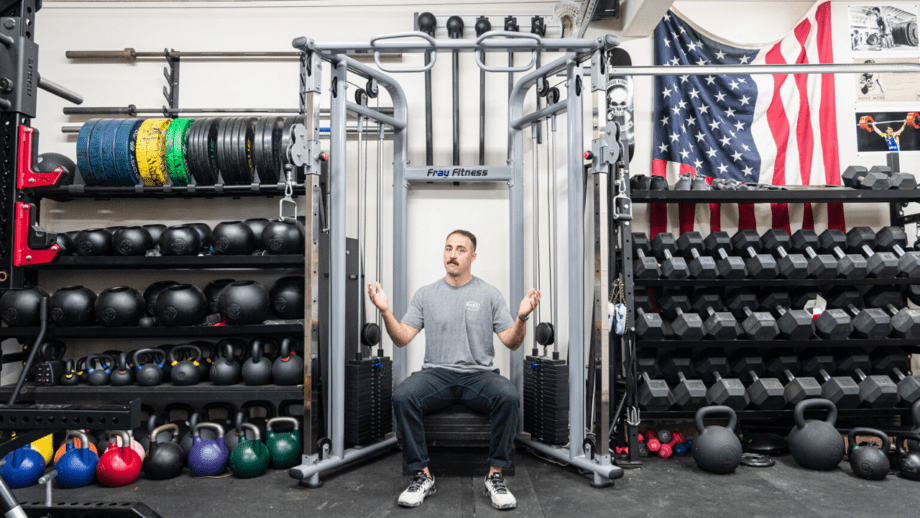Do opposites really attract?
We’re not sure about that, but we are sure that a workout split that hits your pushing muscles one day and your pulling muscles the next will work wonders for helping build a strong upper body.
Why? Because pushing and pulling muscles use different muscle groups, a workout routine that cycles between them should provide lifters with substantial muscle activation to one group while promoting recovery for the other. Combine a push pull workout with a dedicated leg day, and you’ll have a full-body workout regimen that checks all the right boxes.
Today, we’re sharing a push-pull workout that capitalizes on this concept, created by certified personal trainer (CPT) and GGR Head of Content Kate Meier, so fill up your water bottle, perhaps take the best pre-workout for muscle gain, perform your warm-up, and let’s get it!
What Is a Push-Pull Workout?
The idea of a push-pull workout is to cycle between targeted muscle groups so you’re not hitting the same muscles every day. That’s because you’ll get your gains from recovering after the workout, not from the workout itself.
“Pushing movements and pulling movements often use different muscles to accomplish the task,” says Kate, “which means doing a dedicated push day followed by a dedicated pull day works great for meeting your fitness goals while still getting enough rest time.”
A push-pull routine takes advantage of this principle, allowing for great activation in one muscle group while the other rests.
While you’ll most typically incorporate push-pull workouts by doing a push-pull split on different days, it’s possible to do both pushing and pulling exercises on the same day within the same workout.
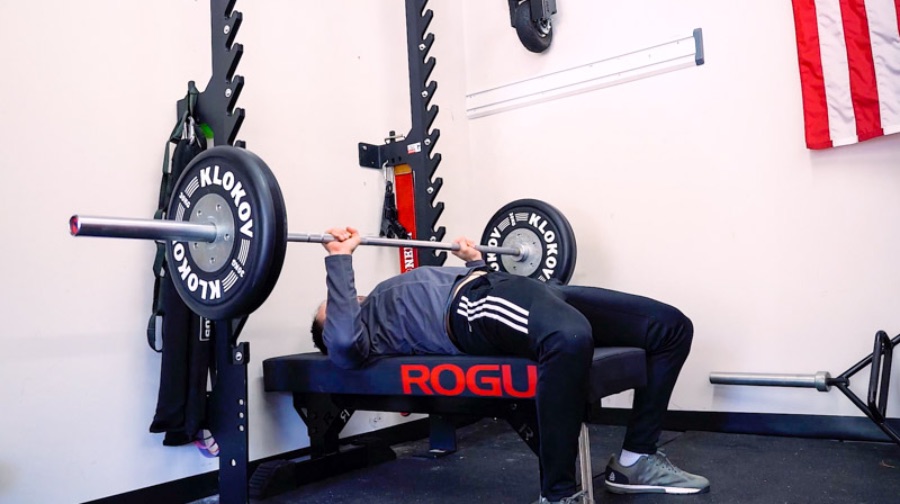
Push-Pull Exercises
Kate’s push-pull exercises can be categorized as horizontal push, vertical push, horizontal pull, and vertical pull movements. A few of these exercises can be difficult for even the heaviest lifters, so consider using a spotter.
Horizontal Push Exercises
Horizontal push exercises involve pushing weights away from the front of the body, mainly targeting your pecs, triceps, and deltoids.
Push-Ups and Push-Up Variations
Why it’s great: Push-ups target your pecs, delts, and triceps while activating muscles in your arms, back, lower body, and core when using proper form1. It’s hands down one of the best bodyweight exercises.
How to do it:
- Place your hands on the floor and step your feet back to enter a high plank position.
- Lower your body to the floor, keeping the elbows close to you.
- Lightly touch the floor with your chest, then push yourself back to the starting position.
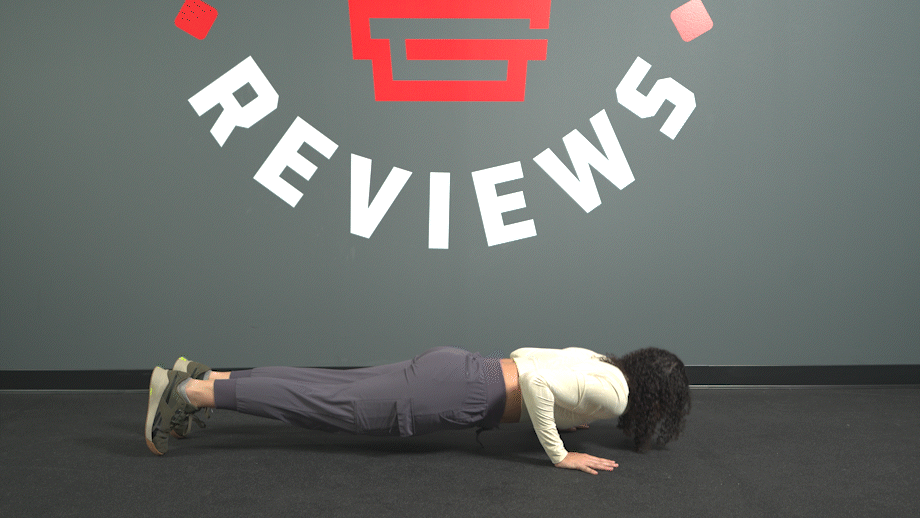
RELATED: What Muscles Do Push-Ups Work?
Barbell Bench Press
Why it’s great: The barbell bench press is an upper body builder, blasting your chest, shoulders, and triceps, as well as your back, lower body, and core.
How to do it:
- Rack and load a barbell, then lie on a flat bench.
- Grip the bar, squeeze your shoulder blades together, and inhale as you lower the bar to your chest. Control its descent.
- From the bottom, exhale and push the bar back up.
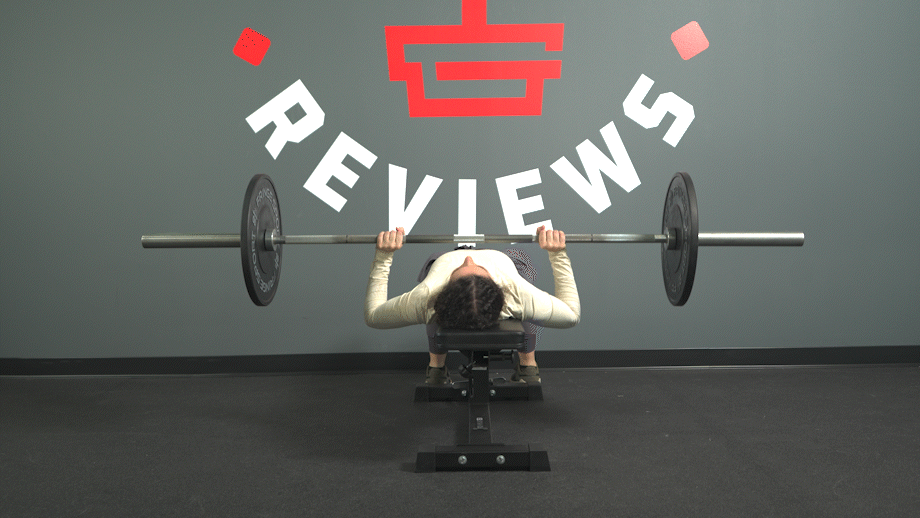
RELATED: What Muscles Does The Bench Press Work?
Dumbbell Bench Press
Why it’s great: The dumbbell bench press provides increased muscle activation and a greater range of motion. Most lifters can’t go as heavy using dumbbells as they can using a barbell, so both have their place and purpose.
How to do it:
- Lie flat on a bench while holding two dumbbells directly above your chest.
- Slowly lower the dumbbells until they are next to your torso on either side.
- Exhale as you push them back into the air.
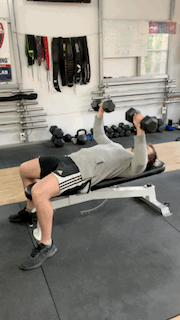
Incline Bench Press
Why it’s great: Performing an incline dumbbell or barbell bench press helps increase activation in the upper pectorals and anterior deltoids, according to a 2020 study published in the International Journal of Environmental Research and Public Health2.
How to do it:
- Adjust the angle of your incline bench between 30- and 45-degrees, then sit.
- Grip the bar and lower it with control to your upper chest.
- Gently tap your chest, then exhale as you push it back to its starting position.
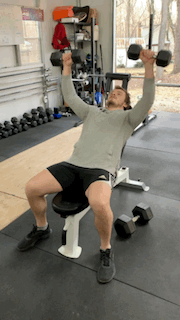
Dumbbell Fly
Why it’s great: The dumbbell fly challenges the shoulders, chest, and arms in a way that’s different from traditional pushing exercises due to its unique movement pattern.
How to do it:
- Lie flat on a bench while holding two dumbbells directly above you with a neutral grip
- Slowly lower the dumbbells to your sides, keeping a soft bend in your elbow.
- Continue until your elbows are in line with your shoulders and the bench, then reverse the motion to return to the starting position.
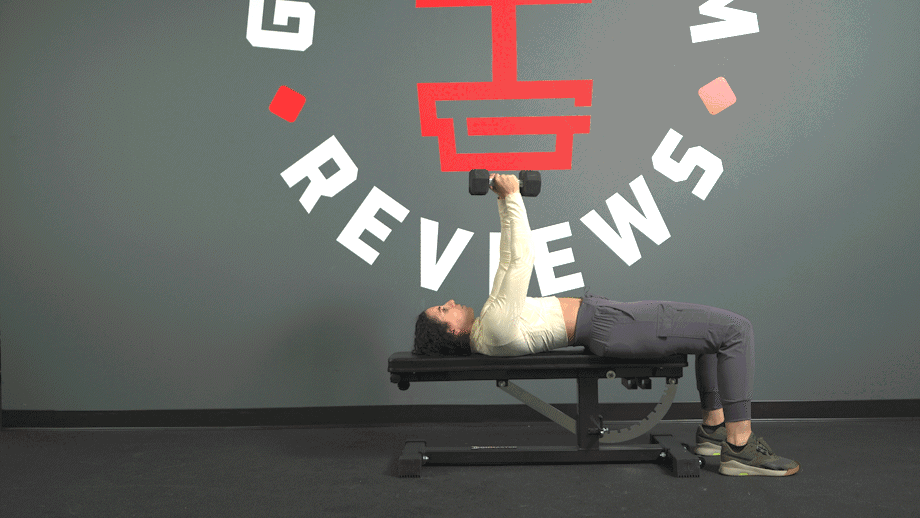
Vertical Push Exercises
You’re still pushing the weights when the plane of motion moves from horizontal to vertical, but now you’ll be pushing them overhead, mostly calling on your shoulders and upper back muscles.
Similar to horizontal push exercises, your triceps will still play a major role.
Military Press
Why it’s great: Military press, shoulder press, overhead press—whatever you want to call this fundamental vertical push exercise, it should definitely be included in your push day regimen. The movement targets the anterior and lateral deltoids and ropes in the traps and triceps.
How to do it:
- Hold a barbell in the front of the body as though you’re about to do a front squat.
- Push the bar directly overhead, keeping the bar path straight.
- Control the bar’s descent back to the starting position.
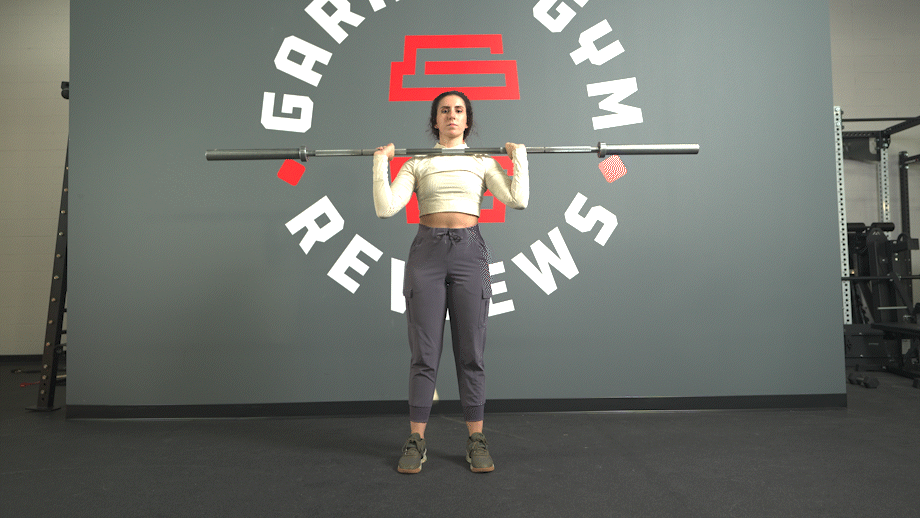
Dumbbell Shoulder Press
Why it’s great: Trading the barbell for a pair of the best dumbbells can help increase muscle activation, range of motion, and eliminate the need to get your head out of the bar’s path.
How to do it:
- Hold two dumbbells at shoulder height using either an overhand or neutral grip.
- Push them directly overhead until your arms are fully locked out.
- Slowly return to the starting position.
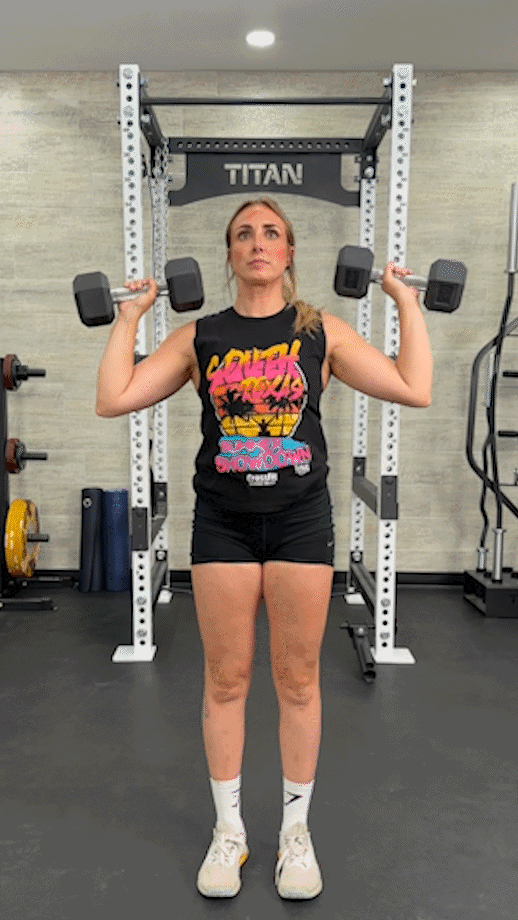
Seated Shoulder Press
Why it’s great: “The standing shoulder press hits your anterior deltoids, lateral deltoids, and triceps,” says Kate, “but it also recruits your core, quads, and glutes to hold a strong posture. Sitting down keeps the emphasis on the arms and shoulders where it should be.”
How to do it:
- Adjust a bench to 90-degrees and sit down, holding two dumbbells at shoulder height.
- Push the weights overhead until your arms are fully locked out.
- Slowly return to the starting position.
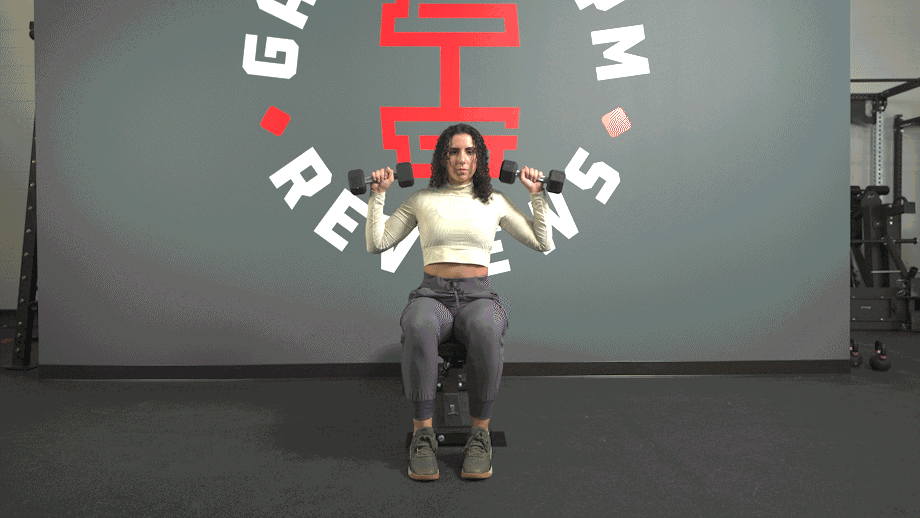
Arnold Press
Why it’s great: Arnold’s version of the classic overhead press is so effective because the rotating movement places equal emphasis on each of the three heads of the deltoid, making it one of the best shoulder-sculpting movements.
How to do it:
- Hold two dumbbells at shoulder height with your palms facing toward you.
- Push the dumbbells over your head while rotating them outward. By the time you reach full lockout, your palms should face away.
- Reverse the movement to return to your starting position.
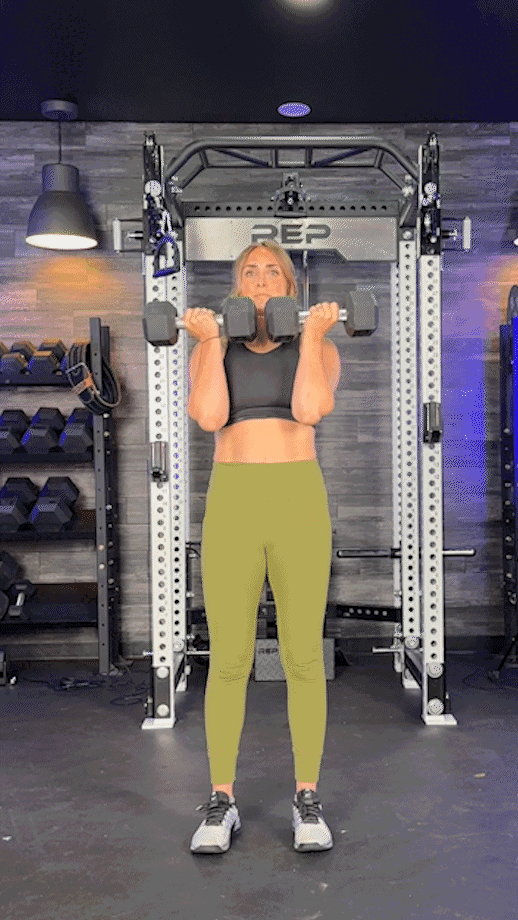
Lateral Raises
Why it’s great: There are plenty of exercises for your shoulders, but lateral raises are one of the best. As far as isolation exercises go, you’ll get excellent activation in the deltoids and upper traps.
How to do it:
- Stand, holding a dumbbell on either side of your body.
- Raise your arms outwards until the weights are in line with your shoulders.
- Squeeze your shoulders, then slowly return to the starting position.
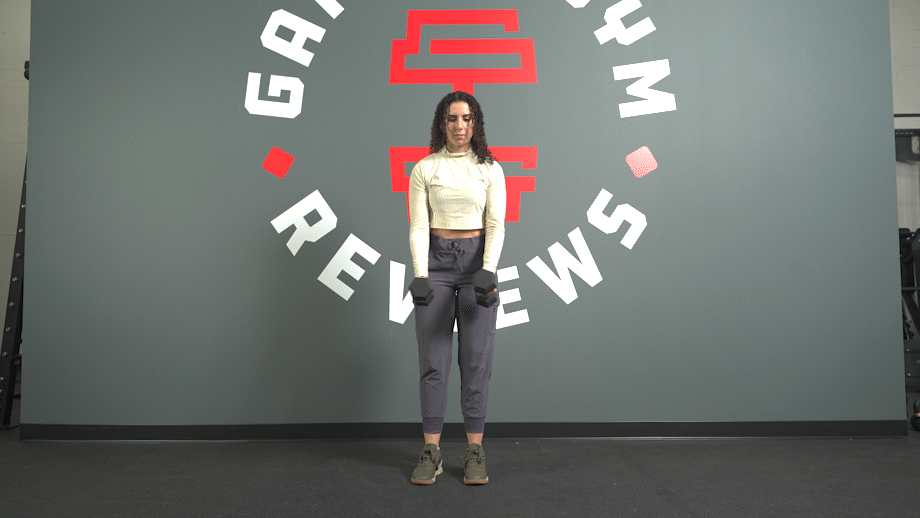
Front Raises
Why it’s great: The front raise is one of the best exercises for hitting the anterior deltoid, helping you build muscle size, strength, and endurance.
How to do it:
- From a standing position, hold two dumbbells in front of the body.
- Raise your arms upward, keeping them straight, until they are at shoulder level.
- Squeeze your shoulders, then slowly return to the starting position.
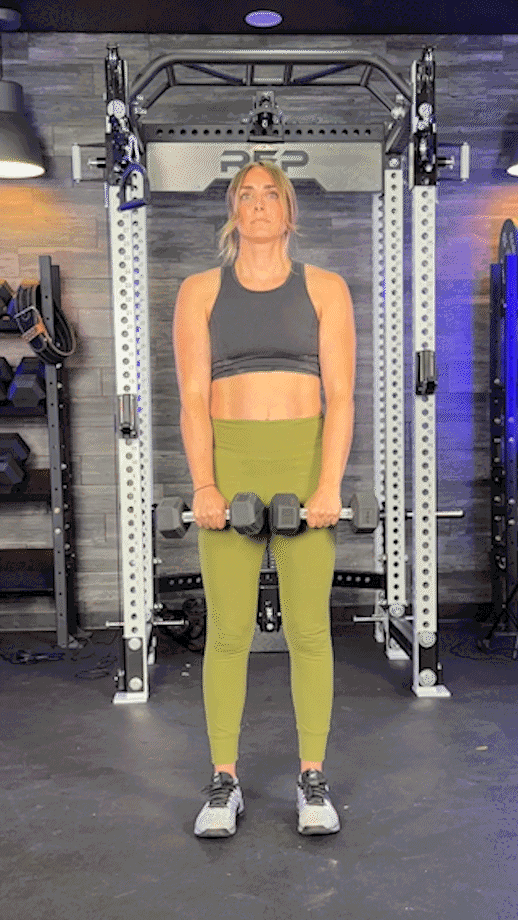
Horizontal Pull Exercises
What do barbell curls, dumbbell curls, and cable rows have in common?
They’re pulling movements.
Movements such as these rope in a slew of different muscles, most notably the lats, traps, rhomboids, and biceps.
Bent-Over Barbell Row
Why it’s great: The bent-over barbell row is a back day must, as it hits your latissimus dorsi, middle and lower trapezius, rhomboids, and posterior delts.
How to do it:
- Load a barbell and place it on the floor. Push your hips back, bringing your chest down, and bend your knees to grip the bar with an overhand grip.
- Extend your knees, maintaining a slight bend, to get back into a standing position with your arms fully extended. Brace your core and keep a neutral back and neck.
- Pull the barbell to your torso by bending your elbows, lightly tapping your body.
- Control the bar’s descent until your arms are fully extended, then reset and repeat.
RELATED: The Best Bent-Over Row Alternatives
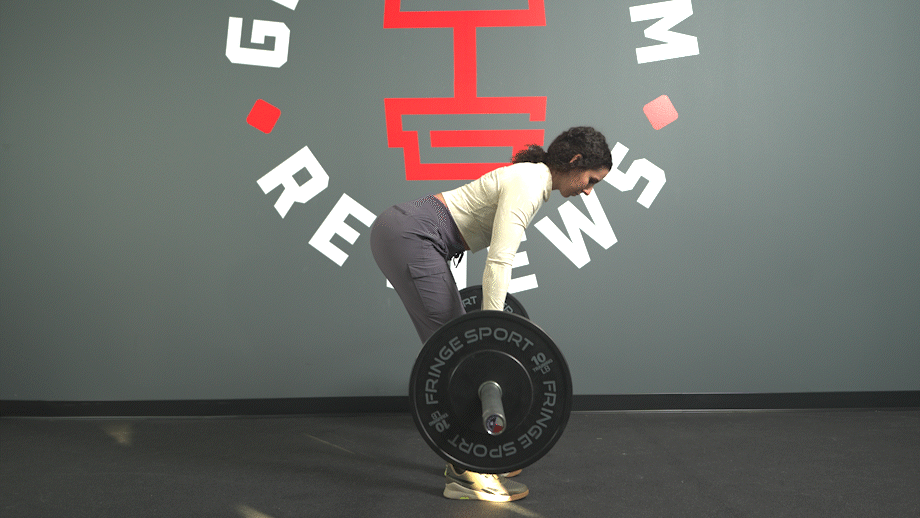
Bent-Over Dumbbell Row
Why it’s great: “The dumbbell row makes a great substitute to the barbell version,” says Kate. “The wider range of motion increases muscle activation, making it great for hypertrophy.”
How to do it:
- Grab two dumbbells, push your hips back, lean your torso forward, and let your arms dangle, fully extended.
- Keeping your back straight, bring the weights to your sternum.
- Slowly bring the weights back to the starting position, controlling their descent.
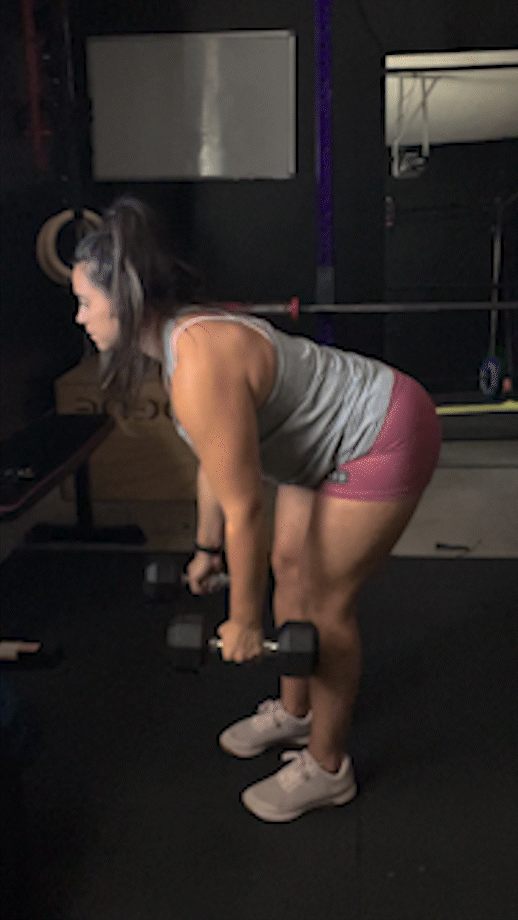
Single-Arm Dumbbell Row
Why it’s great: Converting the exercise into a unilateral movement allows you to really hone in on one arm at a time, helping correct potential muscular imbalances.
How to do it:
- From a standing position, grab one dumbbell and step one foot forward.
- Place your free hand on a workout bench or rest it on your front knee.
- Lean forward until your chest is nearly parallel with the floor and let the arm holding the dumbbell dangle.
- Row the weight by lifting your arm along the side of your body, then slowly bring it back down.
- Repeat as needed, then switch sides and repeat the full set.
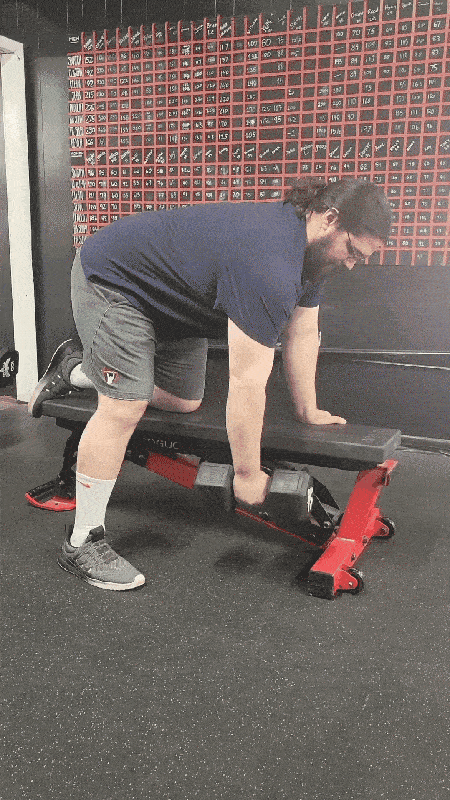
Inverted Row/Ring Row/TRX Row
Why it’s great: Inverted rows target various muscle groups, including the lats, traps, rhomboids, and posterior delts. “They’re a great bodyweight exercise in general,” says Kate, “but they’re especially great as a pull-up modification.”
How to do it:
- Adjust a racked barbell, gymnastics rings, or TRX suspension system to your height, grab on, and step your feet out to your preferred level of difficulty. The closer your legs are to the anchor point, the easier the exercise will feel.
- Pull your chest to the bar or between the bar, rings, orTRX handles.
- Slowly lower your body back down until your arms are fully extended.
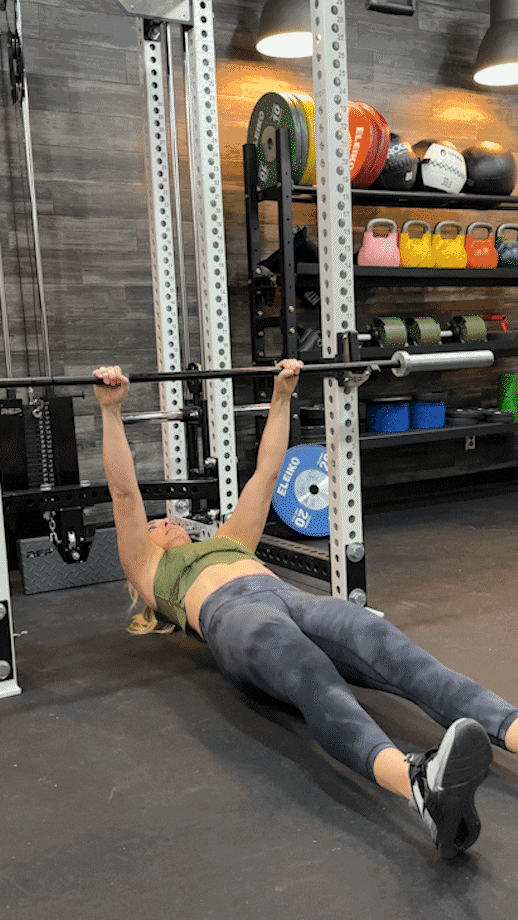
Face Pull
Why it’s great: If you have a cable machine for your home gym, then you can do one of the best pulling exercises on your pull day workout. The cable face pull hits your rear delts, upper back, and often overlooked rotator cuffs.
How to do it:
- Adjust the cable machine to shoulder height, attach the rope attachment, and step back until your arms are fully extended.
- Pull the rope to your face.
- Squeeze your shoulder blades together at the end, then reverse the movement to return to the starting position.
RELATED: How To Do Face Pulls
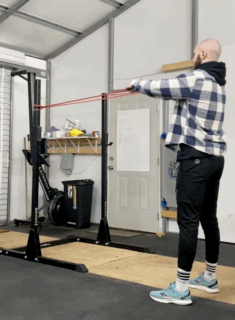
Vertical Pull Exercises
Vertical pull exercises involve pulling your body straight up or pulling an object straight down into your body. Similar to horizontal pulling movements, these hit the shoulders, back, and biceps.
Pull-Up
Why it’s great: Pull-ups are super tough but super worth it! Using only your bodyweight, you’ll hit virtually every major muscle group in your upper body, helping build strength and muscle mass.
How to do it:
- Grab a pull-up bar with an overhand grip and drop into a dead hang.
- Bring your upper chest to the bar, then slowly lower yourself back down.
RELATED: What Muscles Do Pull-Ups Work?
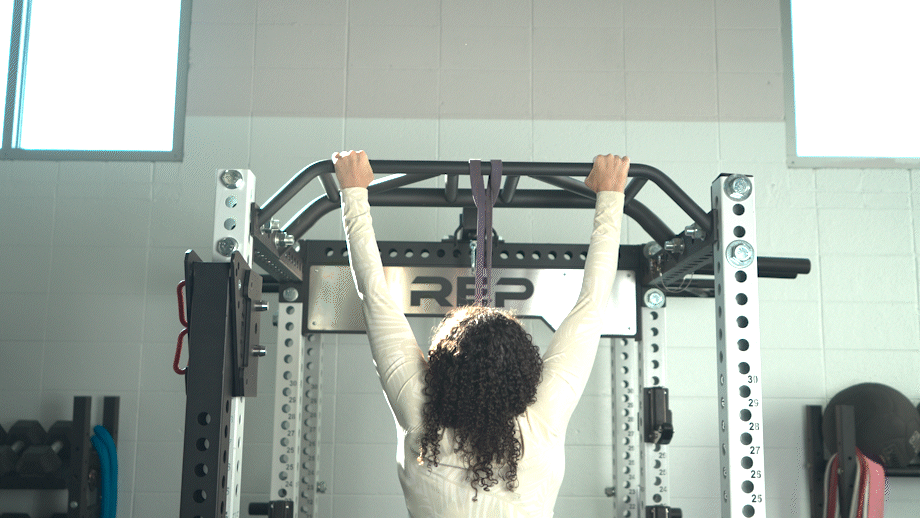
Chin-Up
Why it’s great: Some people use the terms “pull-up” and “chin-up” interchangeably, but they’re two different exercises. The chin-up replaces your pronated grip for a supinated one, shifting the emphasis from the triceps to the biceps.
How to do it:
- Grab the best pull-up bar with an underhand grip and drop into a dead hang.
- Bring your upper chest to the bar, then slowly lower yourself back down.
RELATED: What Muscles Do Chin-Ups Work?
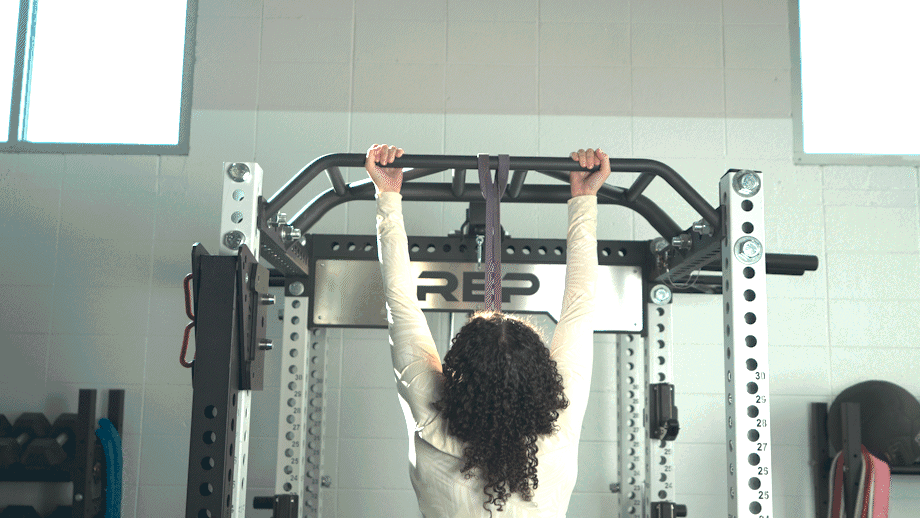
Lat Pull-Down
Why it’s great: If you’re unable to do pull-ups or chin-ups, lat pull-downs make an excellent modification. Depending on your grip, this movement hits the same muscles, notably the latissimus dorsi, rear delts, rhomboids, traps, and triceps or biceps.
How to do it:
- Adjust the machine to your specifications, grab the handles, and let your arms fully extend as you sit down.
- Pull the attachment to your chest.
- Squeeze your shoulder blades together at the end, then slowly return to the starting position.
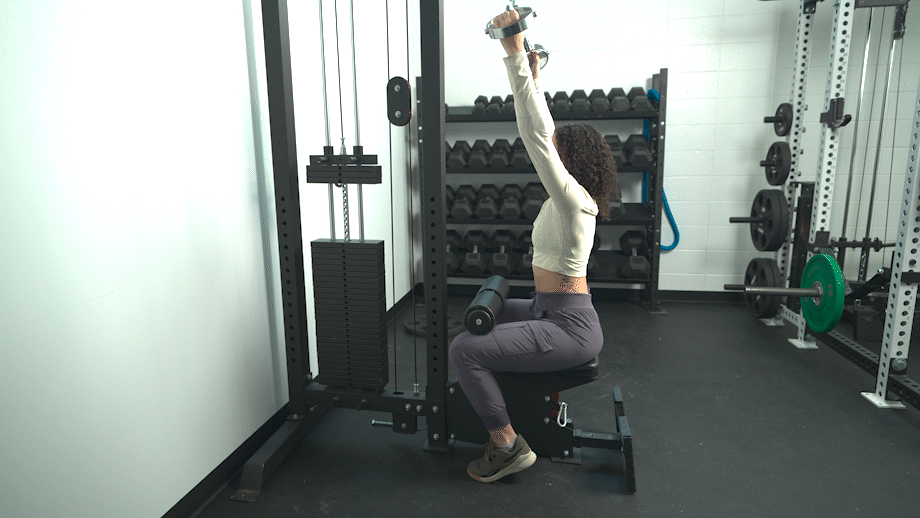
Create The Workout
So, now that we know how a push-pull split can provide a dynamic workout,how do we incorporate it into our training sessions?
For beginners, Kate recommends dedicating one training day to push exercises and another to pulling movement patterns. You can perform them on two consecutive days, or take a rest day in between for proper recovery.
RELATED: How Many Reps To Build Muscle
Here’s a sample beginner workout split.
Push Day
| Exercise | Sets | Reps |
| Barbell Bench Press | 3 to 5 | 3 to 5 |
| Dumbbell Fly | 3 to 5 | 8 to 12 |
| Push-Up | 3 to 5 | 8 to 12 |
| Military Press | 3 to 5 | 3 to 5 |
| Arnold Press | 3 to 5 | 8 to 12 |
| Front or Lateral Raise | 3 to 5 | 8 to 12 |
Pull Day
| Exercise | Sets | Reps |
| Bent-Over Barbell Row | 3 to 5 | 3 to 5 |
| Inverted Row | 3 to 5 | 8 to 12 |
| Face Pull | 3 to 5 | 8 to 12 |
| Pull-Up or Chin-Up | 3 to 5 | 8 to 12 |
| Lat Pull-Down | 3 to 5 | 8 to 12 |
Kate’s push-pull workout is an upper body blaster, so you’ll want to balance it with a leg workout chock full of back squats, split squats, lunges, leg curls, and more on your third training day.
When combined, these exercises can activate most body parts and muscle groups, making this a great all-around split.
Benefits of Push-Pull Workouts
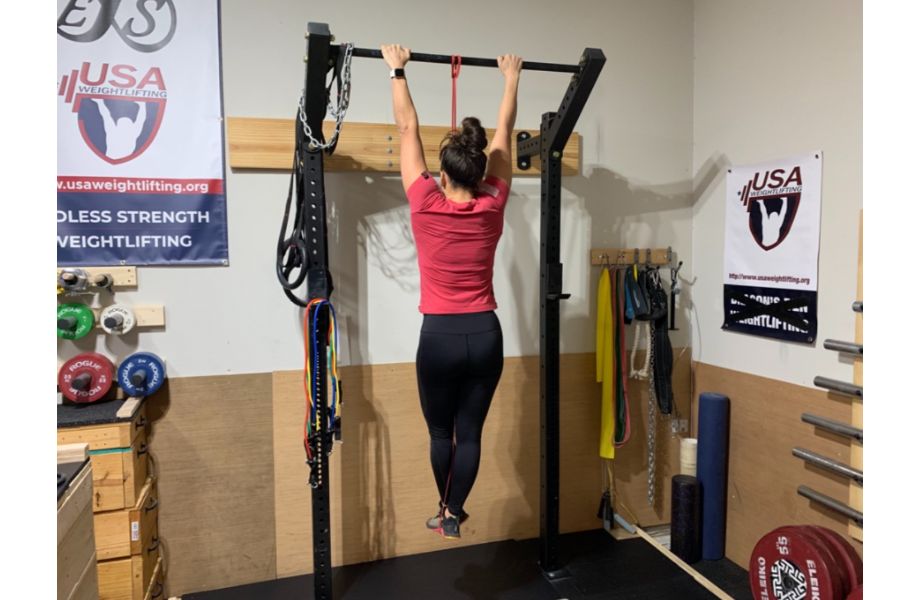
Implementing a push-pull-legs routine is effective on its own, but there are ways to kick it up a notch and reap even more benefits. It’s called agonist-antagonist paired set resistance training3, commonly abbreviated as APS training.
Instead of dedicating a full day to pushing exercises and another to pulling exercises, your workout would juxtapose one push movement with one pull movement in a superset.
For example, you might do eight push-ups, then grab onto a pull-up bar and do eight chin-ups.
“Pushing and pulling exercises tend to target different muscle groups,” says Kate. “So, while you work out your chest and triceps during your set of push-ups, your back and biceps are recovering for the next set of chin-ups and vice versa.”
A 2010 review published in the Journal of Strength and Conditioning Research3 found APS training to be “an efficacious and efficient means of developing strength and power.”
Similarly, a 2019 study published in the International Journal of Environmental Research and Public Health4 stated that agonist-antagonist training “may provide an additional stimulus and an advantage to traditional training protocols,” making it a method for maximizing muscle growth in less time.
Push-Pull Workout: Final Thoughts
Common training splits, like a back and biceps or chest and triceps workout, play on synergistic pairs.
Juxtaposing pushing and pulling exercises to create a workout program that makes use of antagonistic pairs, however, is equally effective and stands a chance to get you to your fitness goals in less time.
Whether you’re dedicating separate training sessions for push-and-pull days, or structuring supersets to get the most bang for your buck, you’re sure to see improvements in your strength and muscle size from trying our push-pull workout.
Push Pull Workout: Q&A
Is a push-pull workout effective?
Absolutely.
Studies have shown that APS training is effective and time efficient, making it ideal for your fitness goals and schedule too!
Can you do push-pull workouts four days a week?
One of the magical things about push-pull workouts is that one set of muscles rests as the other works. Essentially, you hit your pushing muscles while your pulling muscles recover.
That said, you want to make sure all of your muscle groups get a real chance to recover, giving approximately 48 hours between training sessions where the same muscles are targeted. So, you may want to start with 2 to 3 push-pull days at first.
Is a deadlift a push or pull movement?
The push-pull juxtaposition and concept of antagonistic pairs definitely applies to your lower body.
For example, the leg curl uses your hamstrings to pull weight towards your body, while exercises like the leg press and leg extension require pushing to complete the movement pattern.
So, is the deadlift a push or a pull?
You might think it’s a pushing movement, since you’re driving through your heels and flexing your quads to stand up, but ultimately it’s a pulling move since you’re pulling the weight up toward the body as you complete the motion.
RELATED: Deadlift Muscles Worked
References
1. Pushups. (2023, June 17). Physiopedia, . Retrieved 14:21, July 13, 2023 from http:///index.php?title=Pushups&oldid=336751.
2. Rodríguez-Ridao D, Antequera-Vique JA, Martín-Fuentes I, Muyor JM. Effect of Five Bench Inclinations on the Electromyographic Activity of the Pectoralis Major, Anterior Deltoid, and Triceps Brachii during the Bench Press Exercise. Int J Environ Res Public Health. 2020;17(19):7339. Published 2020 Oct 8. doi:10.3390/ijerph17197339
32. Robbins DW, Young WB, Behm DG, Payne WR. Agonist-antagonist paired set resistance training: a brief review. J Strength Cond Res. 2010;24(10):2873-2882. doi:10.1519/JSC.0b013e3181f00bfc
4. Krzysztofik M, Wilk M, Wojdała G, Gołaś A. Maximizing Muscle Hypertrophy: A Systematic Review of Advanced Resistance Training Techniques and Methods. Int J Environ Res Public Health. 2019;16(24):4897. Published 2019 Dec 4. doi:10.3390/ijerph16244897


